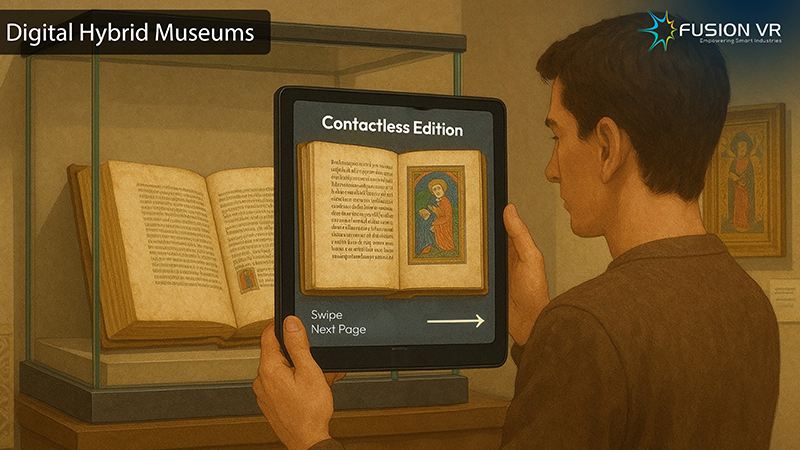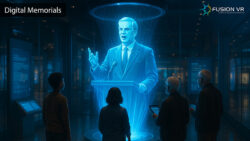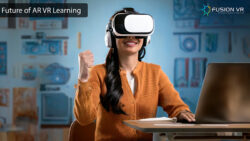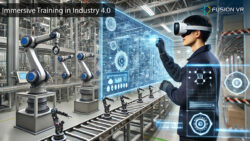The Evolution of Digital Hybrid Museums: Bridging Culture, Technology, and Experience
The past two decades have witness a radical disruption in the museum experience. The museum has transformed from a space for passive observation of artifacts behind the glasses to one that facilitates multisensory experiences through active engagement and storytelling. Digital hybrid museums, at the centre of this paradigm shift, are those institutions that integrate both the physical and digital realms to create immersive cultural experiences and, consequently, changing the very face of the landscape of art, heritage, science, and education.
The Traditional Museum: A Foundation of Knowledge
For centuries, traditional museums have served as protectors of cultural heritage, safeguarding items of historic merit or artistic worth or scientific evidence. They furnish a curated, physical environment such that visitors can view the exhibitions, hear lectures, and participate in educational activities. However valuable these offerings may have been, they were often constrained by considerations of geography, physical accessibility, and the static nature of the exhibit.
Museums were receptive to physical footfall and operated with time and space constraints: visitors were required to be physically present while their engagement was mostly linear and passive. This model, respected though it be, only served to disillusion many would-be learners, especially younger digital natives and people from remote areas.
The Digital Shift: First Wave of Transformation
The internet revolution was the inception of the first digital wave in museums. Websites began sprouting up, each one boasting of such an array of offerings as virtual collections, learning materials, and an extensive range of tours across exhibits. High-definition images, interactive timelines, and digital archives soon also started supplementing the material visit. It was this event that marked such a critical turning point.
This democratized culture and information access and made it possible for audiences from around the world to touch otherwise place-bound content. This is where digital infrastructure excelled during the COVID-19 pandemic: museums fast-tracked their digital course-virtual curator talks, virtual tours an online workshop. The ordeal, therefore, catalyzed another kind of deep reflection on what museums might look like in a world interconnected.

Rise of the Digital Hybrid Museum
In line with the advancement of technology, the function of a museum is also changed along such lines. Enter a new form of museology: the hybrid museum, which creates seamless bridges between the physical gallery visit and the transmission of digitally mediated experiences to amplify engagement and accessibility.
A hybrid museum would employ Augmented Reality, Virtual Reality, Mixed Reality, 3D scanning, Artificial Intelligence, and interactive media. These technologies have to be more than add-ons; they should be embedded into the digital museum experience, which will allow for new ways of storytelling and user participation.
Key Features of Digital Hybrid Museums:
- Immersive Storytelling: Through VR and AR, visitors can experience historical events in the shoes of an actor. An example includes walking around an ancient Roman city; watching the pyramids gain their shape; or watching concepts live of extinct species as those ancestors of humanity might have done.
- Interactive Learning: Touchscreens, gesture interfaces, and gamified exhibits offer the visitors an active way to explore content. Rather than read plaques, they could manipulate 3D models, take quizzes, or simulate scientific experiments.
- Remote Accessibility: Hybrid museums continue to challenge the limits of the physical walls. People from all four corners of the world can join a live virtual exhibition or explore digital twins of museum galleries through web platforms or VR headsets.
- Personalized Experiences: AI-powered recommendation systems adapt a museum experience to user preference, age, or learning goal. Visitors can select their curated paths or thematic routes based on individual interest.
- Data-Driven Insights: Digital interaction produces insights into visitor behavior, preferences, and levels of engagement. The museum can use it to refine their exhibits, create better experiences, and measure impact.
- Inclusivity and Accessibility: Digital tools make museums more inclusive of people with disabilities or from the language barrier, i.e., through sign language avatars or multi-language subtitles and audio guides.
Technological Enablers Behind Hybrid Museums
- Augmented and Virtual Reality: Such experiences create spatial experiences to entail visitors in alternate realities-from putting on a VR headset to experience a ritual by a tribe to using AR in a smartphone to see a 3D rendering of a fossil-wherein the lines dividing the real and the virtual, they’re just blurring.
- 3D Scanning and Photogrammetry: They can produce and preserve very precise digital replicas of objects and historic sites. These, in turn, are invaluable for restoration purposes, research activities, and education.
- Internet of Things (IoT): Smart sensors and interconnected devices will track visitor flows; monitor environmental conditions for artifacts; trigger context-aware content during a tour of the museum.
- Artificial Intelligence (AI): Curation of content, virtual guide, and real-time translations are provided by AI systems. Chatbots can respond to questions, while generative AI can reconstruct lost parts in history narration.
- Cloud Computing and 5G: A real-time high-quality experience of content in such interfaces would be fast and scalable cloud infrastructures combined with low-latency access of 5G.
Cultural Impact and Audience Transformation
From content delivery to engagement, digital hybrid museums are changing the entire process. Interactive, gamified, or immersive content shows younger audiences, digital natives of smartphones and video games, that they might want to pay a visit to a museum. Meanwhile, physically challenged or elderly individuals who once found it almost impossible to get into the physical venues can now interact with the same content online.
In addition, such museums promote a global conversation. Visitors from diverse cultures can view the same exhibition and share their thoughts in real-time, thus enhancing cross-cultural appreciation and inclusivity.
Challenges in the Digital Transition
It is well recognized that the hybrid model of museums comes with opportunities:
- Costs and Infrastructure: The creation and maintenance of high-quality digital experiences demand investments in hardware, software, and expertise.
- Digital Divide: Not all audiences may be able to have access to high-speed Internet and advanced devices, thereby excluding the underprivileged communities.
- Preserving Authenticity: There exists a thin line between augmentation and distortion of reality. Museums need to maintain curatorial integrity and refrain from sensationalism.
- Data Privacy: Visitor data must be collected ethically and in accordance with the relevant privacy laws.
Future Directions
With advancement in technology, hybrid museums will develop along new lines. These might include:
- AI-generated immersive narratives in which historical characters can converse with visitors in real-time.
- Holographic exhibitions presenting life-sized, 3D projections without the use of headsets.
- Metaverse museums where visitors from around the world meet in virtual spaces for collaborative cultural explorations.
Conclusion
The digital hybrid museums are not trends; they are a long-term development for museums. They are experiences in which there is a physical aspect of authenticity blended with a digital element of innovation that creates an engaging and inclusive future-ready atmosphere. As society becomes more connected and our desire for immersive learning grows, hybrid museums will serve as vital anchors for cultures that teach, inspire, and connect humanity across time and space.
In short, the hybrid museum is not merely a place but a dynamic ecosystem where culture lives, technology speaks, and stories come alive.





